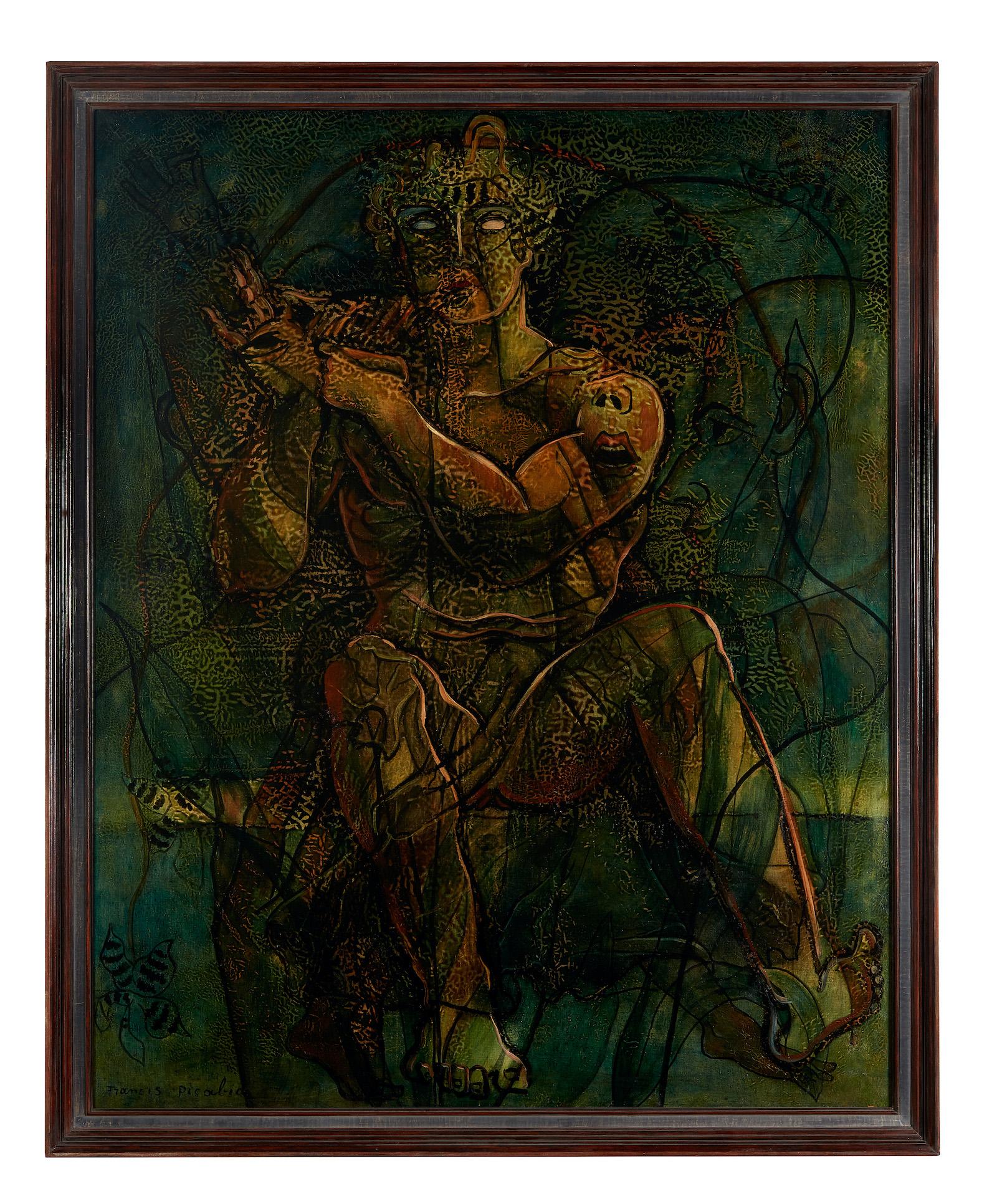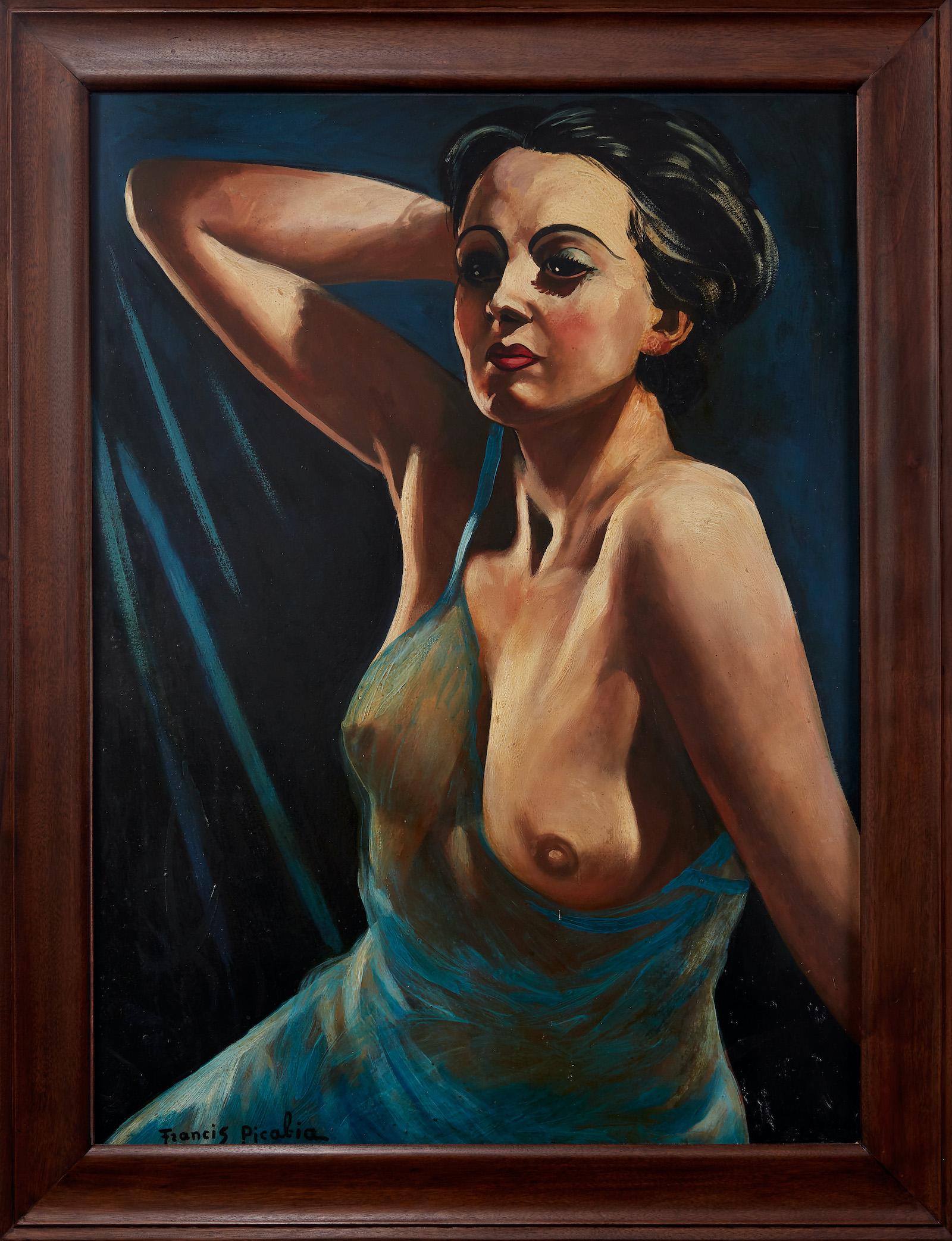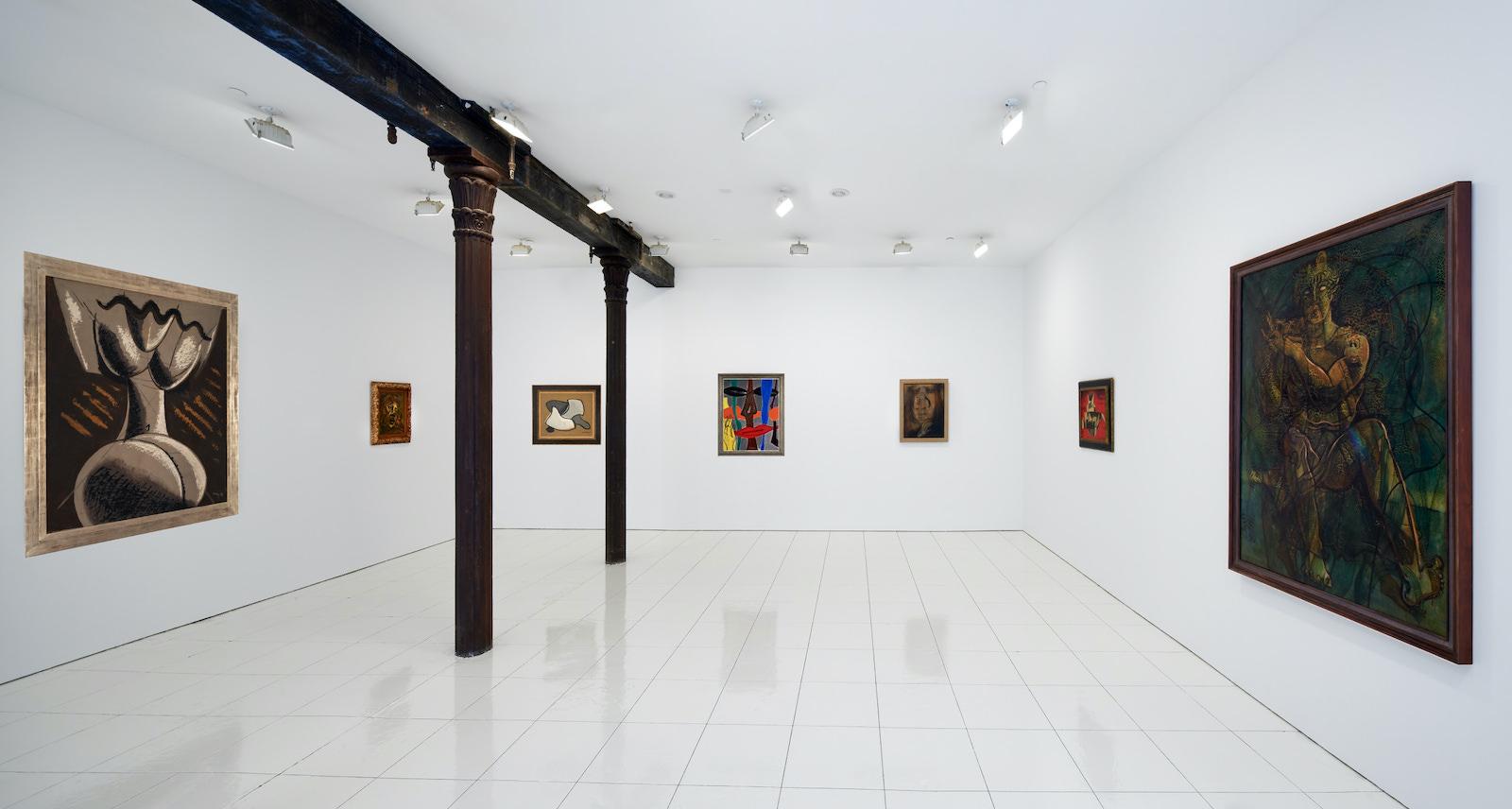Opening his first New York gallery in 2013, his second earlier this year, and a European location in fashionable St. Moritz in 2015, Schnabel has established himself as not only a world-class art dealer but as a connoisseur and collector of modern and contemporary art. Currently presenting the exhibition Man Ray & Picabia at his West Village space in New York, the young art dealer recently sat down with Art & Object to discuss the making of the intimate, jewel box show and the nine powerful paintings in it.
Paul Laster: Where did the concept for this show, pairing Man Ray and Francis Picabia together, originate?
Vito Schnabel: It grew out of a personal obsession with the two artists, whom I’ve been collecting for some time. I had put together about six paintings by the two artists and was internally examining the dialogue between them. And when I acquired Man Ray’s 1947 painting Non-Abstraction, it made me think of Picabia’s 1930’s painting Helias, which Francesco Clemente owns, so a show started to come together in my mind.
PL: They are two of my personal favorites, too. How long have you been interested in them?
VS: Since I started seriously looking at painting. My parents are huge Picabia fans and my sister Lola, who’s five years older than me and an artist who shared the things that she found inspiring with me, has always loved Picabia. As a result, Picabia has been on my radar for a long time, but I initially only knew Man Ray as a photographer. That interest, however, led me to his paintings. I love how he worked in different media and made works in a variety of ways.
PL: Once you had the idea in mind, who did you consult to formulate the show?
VS: I basically knew what I wanted to show, but I wanted someone who was knowledgeable about the work of both artists to write an essay for the show. My friend Stefan Bondell was able to connect me to Timothy Baum, a private art dealer and art historian specializing in Dada and Surrealism. He knows their work better than anyone I know.


































